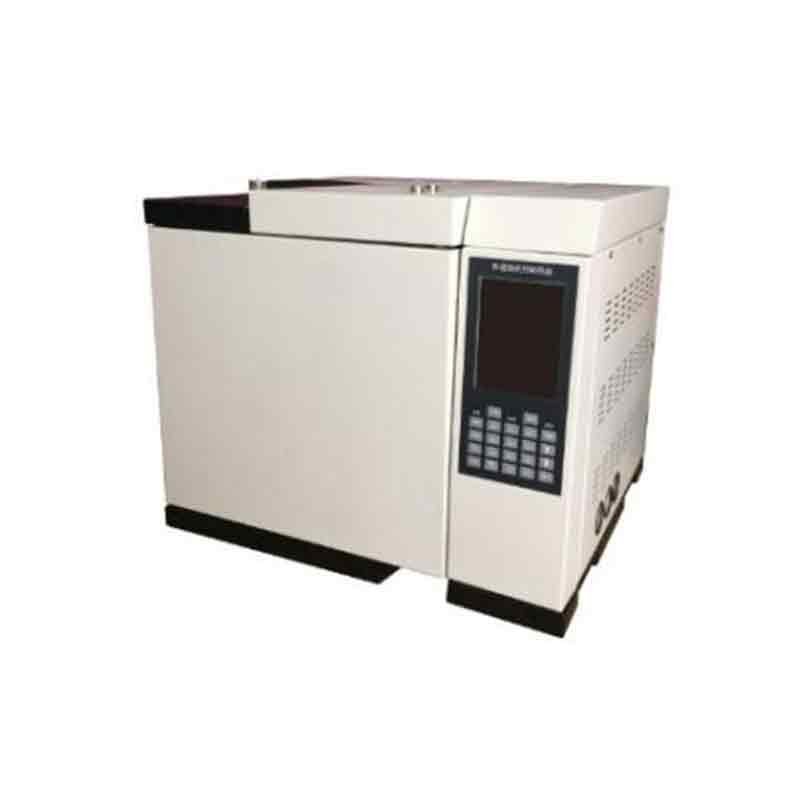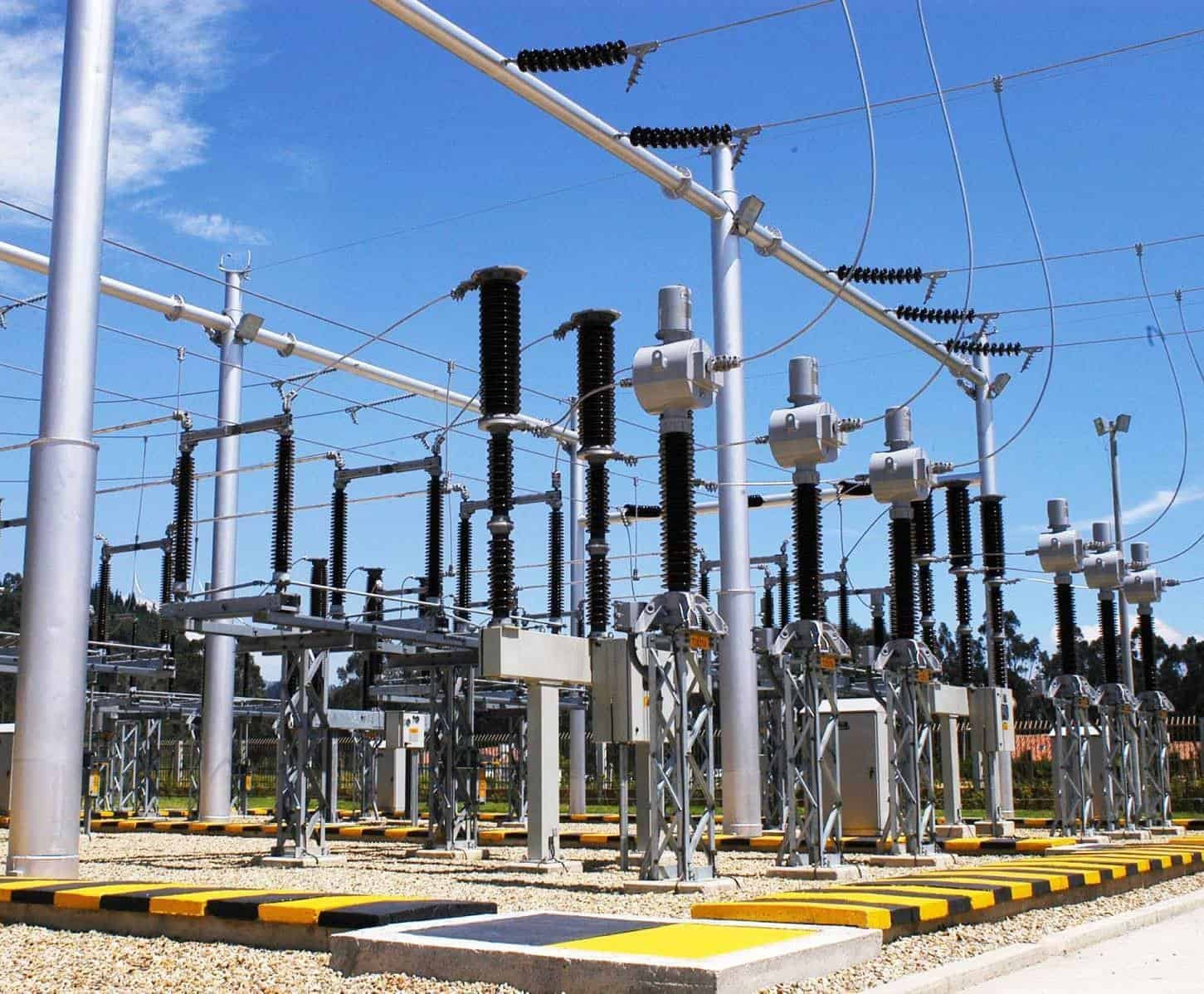What is Dissolved Gas Analysis of transformer oil?
Dissolved gas analysis (DGA) of transformer oil is a technique that measures the types and concentrations of gases dissolved in transformer insulating oil. These gases are produced when faults or abnormal conditions occur inside the transformer, such as overheating, partial discharge, or arcing.
Because the oil both cools and insulates the transformer, any degradation in the oil or the solid insulation (paper, pressboard) will generate specific gases. By analyzing these gases, engineers can detect and classify faults before they cause transformer failure.

What Should You Look for When Buying a Gas Chromatography Machine for DGA?
Buying the wrong Gas Chromatography (GC) machine is a costly mistake. Inaccurate readings can lead to a catastrophic transformer failure. Here is a guide to help you choose wisely. When buying a GC for Dissolved Gas Analysis (DGA), focus on its ability to accurately detect key fault gases, like acetylene, at low levels.
Consider the total cost of ownership, including calibration and consumables. Also, ensure the software is user-friendly and meets international standards. Making the right choice starts with understanding the basic types of equipment available. Each type is designed for a different job, and picking the right one depends entirely on your team’s needs and your asset management strategy. Let’s start with the most common question we get.
What is the difference between portable and online DGA analyzers?
You are not sure which type of DGA is right for your needs. Choosing the wrong one means wasted money and missed opportunities for collecting vital data on your transformers. Portable analyzers are for on-site, periodic spot checks or emergencies. Online analyzers are permanently installed for continuous, real-time monitoring of critical transformers. One offers flexibility, while the other provides constant vigilance for your most important assets. As a manufacturer, we see customers use these tools for very different reasons.

A portable DGA analyzer is like a doctor’s medical kit. An engineer can carry it from one substation to another to perform fleet-wide health screenings or rush it to a site after a fault to quickly diagnose a problem. It gives you a snapshot in time. In contrast, an online analyzer is like an ICU monitor permanently connected to a critical patient. It stays on one high-value transformer, constantly watching for any sign of trouble. It provides a continuous stream of data, allowing you to see trends as they develop. Your choice depends on your goal: do you need the flexibility to test many assets periodically, or do you need 24/7 protection for one critical asset?
| Fonctionnalité | Portable DGA Analyzer | Online DGA Analyzer |
|---|---|---|
| Primary Use | On-site spot checks, emergency response, fleet screening | Continuous, real-time monitoring of a single critical asset |
| Data Collection | Manual, one sample at a time (snapshot) | Automatic, continuous data stream (trending) |
| Installation | No installation needed, carried by hand | Permanently installed on the transformer |
| Best For | Maintenance teams covering multiple substations | Critical transformers, renewable energy sites, remote locations |
How much does a DGA test for transformers cost?
You need to budget for DGA testing but have no idea about the costs involved. Unexpected expenses can easily disrupt your entire maintenance plan and leave you without critical data. The cost depends on your method. Sending a sample to a lab costs between $100 and $500 per test. Buying a portable analyzer is a one-time cost of $15,000 to $50,000. An online monitor can cost $25,000 to over $100,000 to install. The initial purchase price is only part of the story. You must consider the Total Cost of Ownership (TCO).
While sending samples to an external lab seems cheap per test, the costs add up quickly if you have many transformers. You also have to factor in shipping costs and the time delay in getting results, which can be critical during an emergency.
A portable DGA has a higher upfront cost but gives you immediate results and control. However, you must also budget for consumables like carrier gases and plan for periodic factory calibration to maintain accuracy. An online monitor has the highest initial cost but provides the cheapest data per reading over its lifetime. It works 24/7 without needing an operator on-site, offering the best protection for a multi-million dollar transformer.
| Testing Method | Initial Cost | Per-Test Cost | Key Consideration |
|---|---|---|---|
| Laboratory Test | Very Low | $100 – $500 | Slow results, cumulative costs can become high. |
| Portable Analyzer | Medium | Low (cost of consumables & labor) | Provides immediate results and flexibility. Requires training. |
| Online Monitor | High | Very Low (mostly electricity) | Offers the best protection and early warning for critical assets. |
Which international standards (like IEC 60567) should a DGA machine meet?
You see standards like IEC 60567 on product spec sheets but are not sure why they matter. Buying non-compliant equipment can lead to unreliable data, disputes, and unsafe decisions. Your DGA machine should meet key international standards to ensure reliable results.
The most important are IEC 60567 for oil and gas sampling and ASTM D3612 for the gas chromatography test method. Compliance guarantees that your data is accurate and repeatable. Standards are the foundation of good science and engineering. They make sure everyone is measuring things the same way.
When your equipment complies with these standards, you can trust the data it produces. IEC 60567 is critical because it defines the correct procedure for taking the oil sample from the transformer. A perfect DGA machine will give you a bad result if the sample was taken incorrectly. ASTM D3612 is the standard that specifies how the machine itself should separate and measure the dissolved gases.
It ensures the chemistry is right. Finally, while not a machine standard, IEEE C57.104 provides guidance on how to interpret the results. Good DGA software often has tools based on this standard, like the Duval Triangle, built right in to help you make sense of the data.
| Standard | Full Title | What It Governs | Why It’s Important for You |
|---|---|---|---|
| IEC 60567 | Oil-filled electrical equipment – Sampling of gases and of oil for analysis of free and dissolved gases | The physical process of taking samples to avoid contamination. | Ensures the sample accurately represents the oil in the transformer. |
| ASTM D3612 | Standard Test Method for Analysis of Gases Dissolved in Electrical Insulating Oil by Gas Chromatography | The laboratory procedure for using a gas chromatograph. | Guarantees the test method is accurate and repeatable. |
| IEEE C57.104 | IEEE Guide for the Interpretation of Gases Generated in Oil-Immersed Transformers | How to interpret the gas data to diagnose potential faults. | Helps you turn raw data into an actionable maintenance decision. |
What are the key features to compare in a transformer oil tester?
All the technical specification sheets look the same and are filled with jargon. You might buy a machine based on price, only to find it lacks the critical features you need in the field. When comparing DGA machines, look at the detection limits for key fault gases, especially acetylene (C2H2). Check the accuracy and repeatability. Evaluate the software for ease of use and built-in diagnostic tools.
Finally, consider the real-world costs of operation. Let’s break down what really matters. The single most important technical specification is the Lower Detection Limit (LDL) for acetylene. Acetylene is only produced during high-energy arcing, which is a very serious fault. A good machine can detect it at very low levels, giving you an early warning before a catastrophic failure.
Next, look at the software. Is it easy to use? Does it automatically plot results and apply diagnostic methods like the Duval Triangle? Good software saves time and reduces the chance of human error. Finally, think about the long-term operational needs. How often does the machine need to be calibrated? What kind of carrier gas does it use, and is it expensive or hard to find in your region? A machine that is cheap to buy but expensive to run is not a good deal.
| Fonctionnalité | What It Means in Simple Terms | Why It Matters to You |
|---|---|---|
| Detection Limits | The smallest amount of gas the machine can reliably detect. | You need low limits for key gases like acetylene to catch serious faults early. |
| Accuracy & Repeatability | Does it give the right answer every single time? | Inaccurate data leads to bad decisions, like taking a healthy transformer offline. |
| Software & Diagnostics | How easy is it to operate and understand the results? | Automated tools like the Duval Triangle help you diagnose faults quickly and reliably. |
| Cost of Ownership | All the costs after you buy it (gases, calibration, etc.). | A low purchase price can hide high long-term costs. |
What are the Current Market Trends for Transformer Diagnostic Equipment in 2025?
Keeping up with the transformer diagnostics market is tough. You risk buying outdated tools and falling behind. Here are the key trends for 2025 to help you invest wisely. The 2025 market is driven by grid modernization and renewable energy growth. There is a strong shift towards predictive maintenance, boosting demand for Dissolved Gas Analyzers (DGA), especially online and portable models. Developing regions like the Middle East and Southeast Asia are key growth areas.
These big trends are changing how we think about asset management. To really understand what this means for your business, we need to look closer at the numbers, the technology, and the specific regions that are growing the fastest. Let’s start by looking at the global market size.
What is the global market size for Dissolved Gas Analyzers?
Trying to justify a budget for new DGA equipment? Without solid market data, your request might get denied. We have the numbers you need to build a strong case. The global Dissolved Gas Analyzer (DGA) market is projected to reach approximately USD 1.3 billion by 2025. Industry reports show a steady compound annual growth rate (CAGR) of around 7-8%, driven by the increasing need for grid reliability and predictive maintenance strategies. The numbers show strong, consistent growth.

This is not just a small trend; it is a fundamental shift in how utilities manage their most critical assets. This growth is fueled by two main factors. First is the need to extend the life of aging transformers in developed countries. Second is the massive grid expansion projects in developing nations. A DGA is no longer a luxury. It is becoming a standard part of predictive maintenance programs worldwide. According to industry analysis from firms like Mordor Intelligence and Global Market Insights, this steady growth gives confidence to buyers and manufacturers like us. It shows that investing in DGA technology is a smart, long-term decision for 2025 and beyond.
| Market Segment | Estimated 2025 Share | Key Growth Driver |
|---|---|---|
| Online DGA Monitors | ~45% | Need for real-time data for critical & renewable-connected assets. |
| Portable DGA Units | ~35% | Demand for rapid, on-site diagnostics and emergency response. |
| Laboratory Services | ~20% | Remains the gold standard for high-accuracy and comprehensive analysis. |
How is the growth of renewable energy affecting the DGA market?
Renewable energy sources are unpredictable, and this puts new stress on transformers. Ignoring this can lead to unexpected failures. Continuous monitoring is the key to managing this new risk. Renewable energy growth is a major driver for the DGA market. The variable output from wind and solar farms causes rapid load changes on transformers, increasing stress and fault risks. This drives the demand for online DGA monitors to provide real-time health data for these critical assets.
Traditional power generation provides a stable, predictable load. Transformers connected to these grids operate under relatively steady conditions. Renewable energy is different. A cloud passing over a solar farm or the wind suddenly dropping can cause a massive swing in power output in just seconds. This intermittency forces the transformer to work much harder, leading to more frequent temperature changes and higher electrical stress. This accelerates the aging of the transformer’s insulation and increases the rate at which fault gases are generated.
An annual DGA test might not be enough to catch a problem that develops quickly. This is why online DGA is becoming standard for renewable projects. It provides a constant stream of data, allowing operators to see trends and get immediate alerts.
| Factor | Traditional Grid Impact | Renewable Grid Impact |
|---|---|---|
| Load Profile | Stable and predictable. | Variable and intermittent. |
| Operational Stress | Lower, consistent thermal and electrical stress. | Higher, fluctuating stress, leading to faster aging. |
| DGA Monitoring Need | Periodic lab testing is often sufficient. | Online, real-time monitoring is becoming essential. |
What are the key market drivers in the Middle East and Southeast Asia for test equipment?
Focusing on the wrong markets wastes time and money. The Middle East and Southeast Asia are booming, but do you know why? Understanding their specific needs is crucial for success. In the Middle East, drivers include massive infrastructure projects (like Saudi Vision 2030) and industrial expansion. In Southeast Asia, rapid urbanization and grid modernization are key. Both regions demand reliable, cost-effective equipment to build out their power networks and ensure stability. These two regions are our most important growth markets, but their needs are slightly different.
In the Middle East, especially in countries like Saudi Arabia and the UAE, government-led initiatives are pouring billions into new cities, industrial zones, and renewable energy projects. These customers have large budgets and demand high-quality, reliable equipment to protect their investments. They are often less sensitive to price.
In Southeast Asia, countries like Vietnam, Indonesia, and Thailand are experiencing rapid economic and population growth. This requires a fast expansion of their electrical grids. These customers are building many new substations and need reliable testing equipment that also provides great value. They are looking for the right balance of performance and price, which makes Chinese factory-direct suppliers like us a very good fit for their needs.
| Region | Primary Driver | Key Projects/Sectors | Customer Preference |
|---|---|---|---|
| Middle East | Economic diversification & industrialization. | Smart cities (e.g., NEOM), oil & gas, large-scale solar farms. | High performance, reliability, latest technology. |
| Southeast Asia | Grid expansion & modernization. | New power plants, transmission line upgrades, manufacturing. | Strong balance of performance and price (high value). |
What is the trend for online DGA monitoring vs. periodic lab testing?
Choosing between online monitoring and lab testing is a common challenge. One offers constant data, while the other offers ultimate precision. Making the wrong choice can be costly and inefficient. The trend is not a replacement but a partnership. Periodic lab testing remains the “gold standard” for accuracy and comprehensive analysis.
However, online DGA monitoring is growing rapidly for critical, high-risk transformers to provide continuous, real-time data and early warnings between lab tests. Think of it this way: periodic lab testing is like a detailed annual health check-up with your doctor. You get the most accurate and in-depth results possible, looking for a wide range of issues. It is perfect for establishing a baseline of transformer health and analyzing trends over many years.
Online monitoring is like wearing a 24/7 heart rate monitor. It might not give you the same level of diagnostic detail, but it will alert you to a problem the second it starts. This immediate warning is crucial for the most important assets.
Many utilities now use a hybrid approach. They install online monitors on their most critical, oldest, or heaviest-loaded transformers while continuing with annual lab tests for the rest of the fleet. This strategy provides the best balance of cost, risk, and reliability.
| Fonctionnalité | Online DGA Monitoring | Periodic Lab Testing |
|---|---|---|
| Data Frequency | Continuous, real-time data (every hour or minute). | Periodic (usually once per year). |
| Diagnostic Depth | Monitors key fault gases (5-9 gases). | Highly detailed analysis of all significant gases (10+). |
| Best Application | Critical, high-risk, or remote transformers. | Entire fleet, baseline data, detailed diagnostics. |
| Cost Model | Higher initial investment, lower operational cost. | Lower initial investment, ongoing operational cost per sample. |




